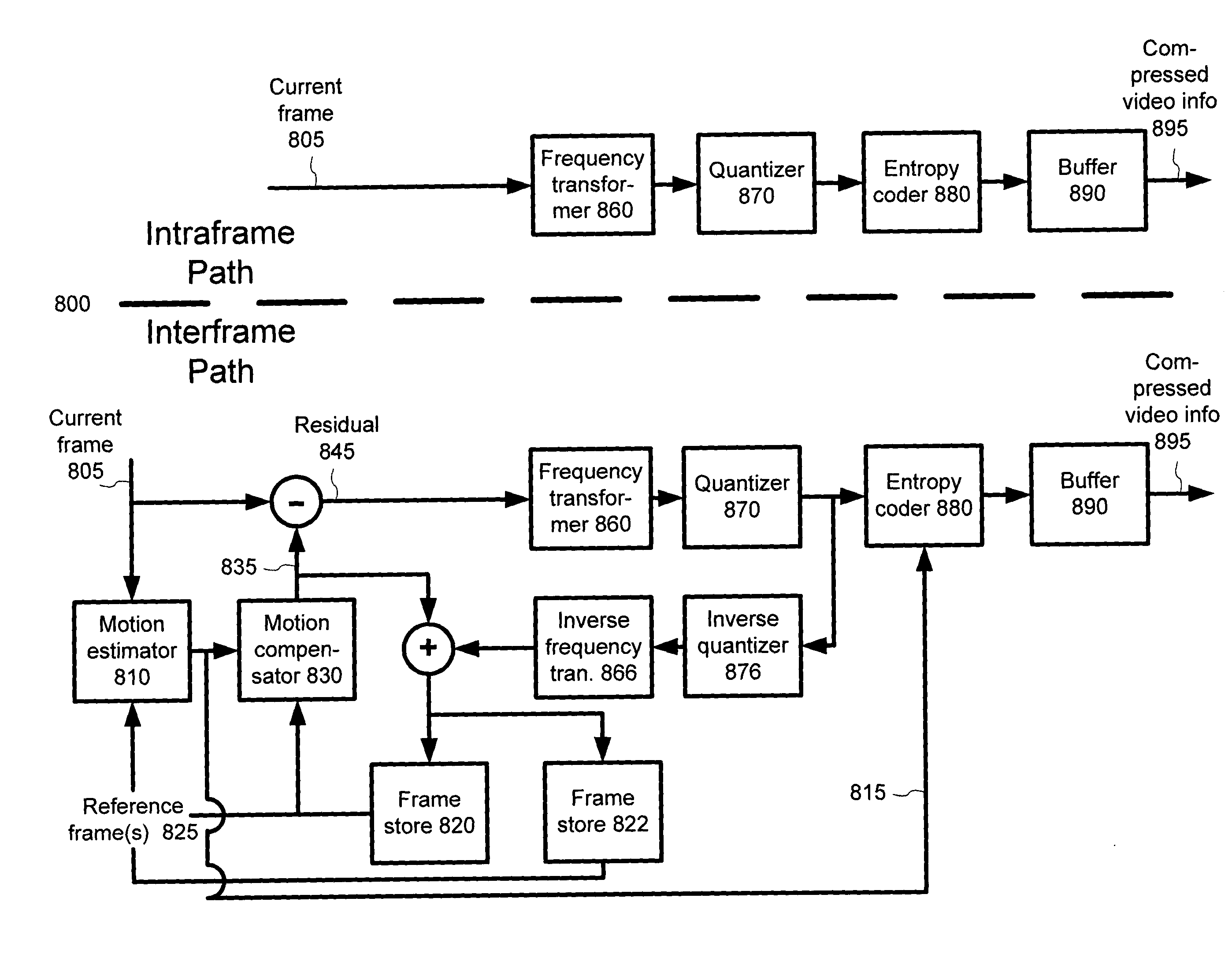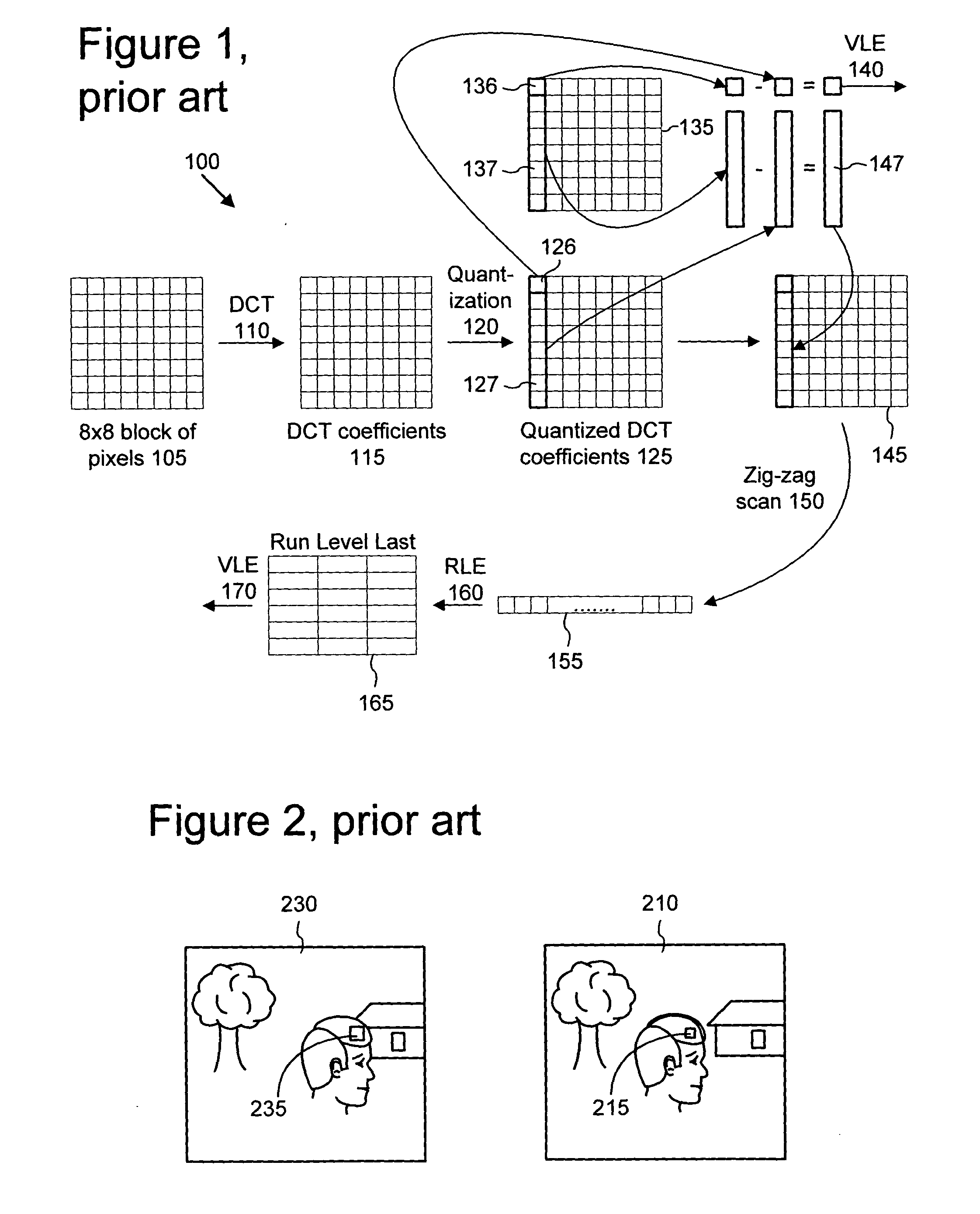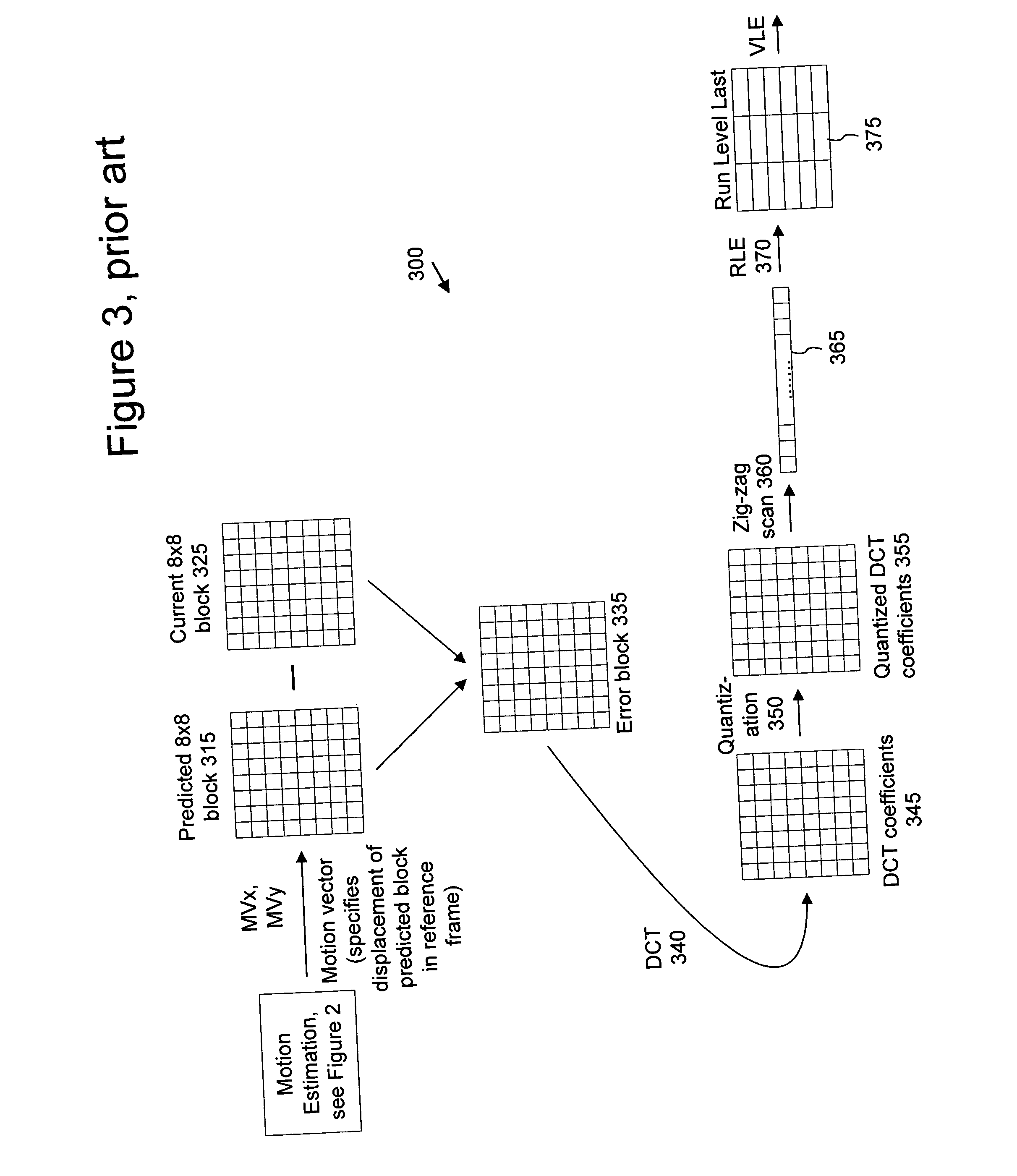Advanced bi-directional predictive coding of video frames
a video frame and predictive coding technology, applied in the direction of color television with bandwidth reduction, signal generator with optical-mechanical scanning, television systems, etc., can solve the problems of large storage and transmission capacity of digital video, lossless compression, and most computers and computer networks lack the resources to process raw digital video
- Summary
- Abstract
- Description
- Claims
- Application Information
AI Technical Summary
Benefits of technology
Problems solved by technology
Method used
Image
Examples
Embodiment Construction
The present application relates to techniques and tools for predictive coding of video images (e.g., frames). In various described embodiments, a video encoder and decoder incorporate techniques that improve the efficiency of bi-directional predictive coding and decoding of video images (e.g., B-frames), and a bit stream format or syntax includes flags and other codes to incorporate the techniques. The bit stream format comprises different layers or levels (e.g., sequence level, frame / picture / image level, macroblock level, and / or block level).
Described embodiments use direct mode prediction in which the time-stamp dependency of conventional implementations is eliminated. For example, in some embodiments, a video encoder uses a fraction to encode a B-frame's temporal position relative to a reference frame. This direct mode prediction model shifts from a constant velocity model to variable velocity model to more closely align it with the kind of motion that is actually present in a...
PUM
 Login to View More
Login to View More Abstract
Description
Claims
Application Information
 Login to View More
Login to View More - R&D
- Intellectual Property
- Life Sciences
- Materials
- Tech Scout
- Unparalleled Data Quality
- Higher Quality Content
- 60% Fewer Hallucinations
Browse by: Latest US Patents, China's latest patents, Technical Efficacy Thesaurus, Application Domain, Technology Topic, Popular Technical Reports.
© 2025 PatSnap. All rights reserved.Legal|Privacy policy|Modern Slavery Act Transparency Statement|Sitemap|About US| Contact US: help@patsnap.com



